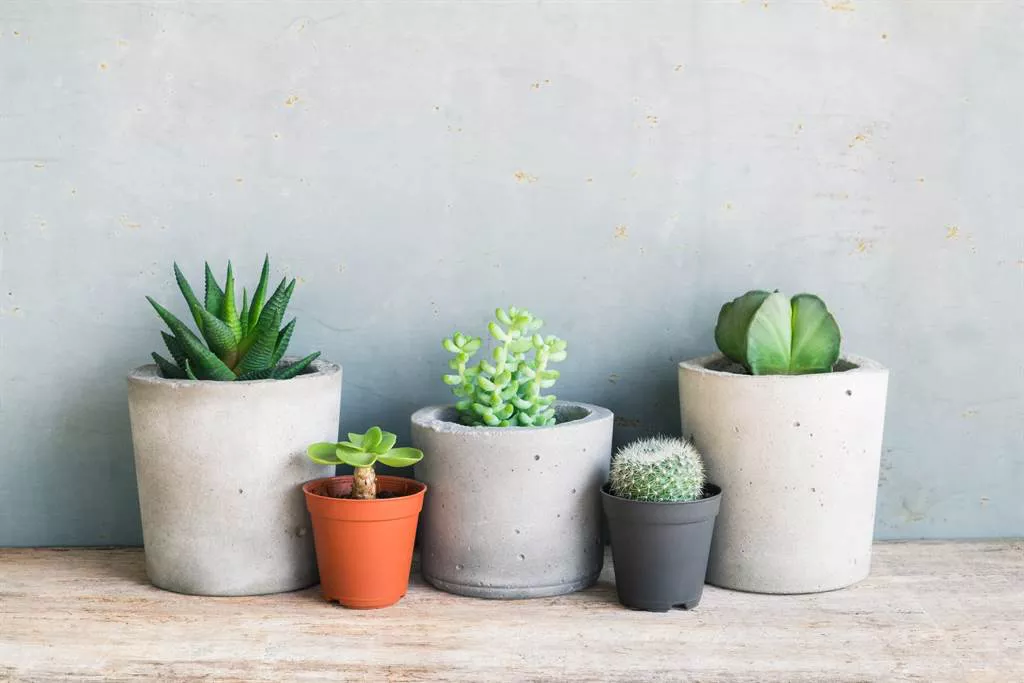Succulents have taken the gardening world by storm, and it’s easy to see why. These resilient and charming plants come in a wide variety of shapes and colors, making them a favorite among both novice and experienced gardeners. One essential aspect of succulent care is learning how to root succulents quickly and effectively. In this comprehensive guide, we will walk you through the step-by-step process to ensure your succulents establish strong roots, ensuring their long-term health and beauty.
1. Choosing the Right Succulents to Root
Before delving into the process of rooting succulents, it’s crucial to select the right plants. Some succulents are easier to root than others, so beginners may want to start with hardier varieties like Echeveria, Sedum, or Graptopetalum. These succulents are known for their ability to root quickly, making the process more manageable for those new to gardening.
2. Selecting the Perfect Container for Root
Rooting succulents requires an appropriate container. Choose a pot or container that has drainage holes to prevent waterlogging, which can lead to root rot. Additionally, opt for a shallow container to encourage the succulent’s roots to spread horizontally, promoting stability and growth.
3. Preparing the Right Soil Mix for Root
The soil mix plays a crucial role in helping succulents root quickly. A well-draining succulent mix is essential to prevent excess moisture that can hinder root development. You can create your mix by combining equal parts of potting soil and perlite or sand. This blend ensures the right balance of moisture retention and drainage, which is key to root succulents successfully.
4. Taking Healthy Cuttings for Propagation
To root succulents, you’ll need cuttings from a healthy mother plant. Choose a succulent with strong, disease-free leaves and use clean, sharp scissors or pruning shears to take your cuttings. Make clean cuts close to the stem, ensuring that each cutting is at least a couple of inches long. Leave the cuttings to air dry for a day or two before proceeding with the rooting process.
5. Rooting Succulents in the Right Conditions
Creating the right environment is crucial when learning how to root succulents quickly. Place your container with the cuttings in a location that receives indirect sunlight. Avoid direct sun exposure, as this can scorch the delicate leaves. Succulents thrive in temperatures between 65°F and 75°F (18°C to 24°C), so maintain these conditions for optimal results.
6. Applying the Callus Method for Success
The callus method is a tried-and-true technique for rooting succulents quickly. After allowing your cuttings to air dry, place them on top of the well-draining soil mix in your container. Ensure that the cut end of each leaf is in contact with the soil. Be patient, as this method can take a few days to a week for roots to form. Regularly mist the soil to keep it lightly moist, but avoid overwatering.
7. Monitoring and Caring for Rooting Succulents
Root succulents require attentive care during the rooting process. Keep a close eye on the cuttings and ensure they receive the right amount of light and moisture. If you notice any rotting or discoloration on the leaves, promptly remove affected cuttings to prevent the spread of disease. As the roots start to develop, you can gradually reduce the frequency of misting.
8. Transplanting Rooted Succulents
Once your succulent cuttings have developed a healthy root system, it’s time to transplant them into their permanent containers. Choose pots with drainage holes and fill them with the same well-draining succulent mix used during the rooting process. Gently plant the rooted cuttings in the soil, ensuring that the roots are covered and the leaves are above the surface.
9. Root Succulents in the Right Season
Timing is essential when learning how to root succulents quickly. Spring and early summer are the ideal seasons for propagation, as succulents are in their active growth phase. During this time, they have the energy and vitality needed to establish strong roots swiftly. Avoid propagating succulents during the dormant winter months, as the process will be considerably slower.
10. Fertilizing Rooted Succulents
As your rooted succulents grow and thrive, it’s important to provide them with the necessary nutrients for continued health. Use a balanced, diluted succulent fertilizer during the growing season, typically from spring to early fall. Be cautious not to over-fertilize, as succulents are relatively low-maintenance plants and can be sensitive to excess nutrients.
11. Maintaining Rooted Succulents for Long-Term Success
Rooting succulents is just the beginning of your journey with these captivating plants. To ensure long-term success, maintain proper care and attention. Keep your succulents in containers that allow for good airflow and drainage. Water them sparingly, allowing the soil to dry out between waterings to prevent root rot. Prune and trim your succulents as needed to maintain their shape and prevent overcrowding.
Conclusion
Rooting succulents quickly is an essential skill for any succulent enthusiast. By choosing the right succulents, containers, soil mix, and following the proper steps, you can successfully propagate these beautiful plants. Remember that patience and care are key, and with time, you’ll enjoy the satisfaction of watching your rooted succulents grow and thrive, adding a touch of natural beauty to your home or garden. Root succulents with confidence and enjoy the rewarding experience of nurturing these unique and resilient plants.


